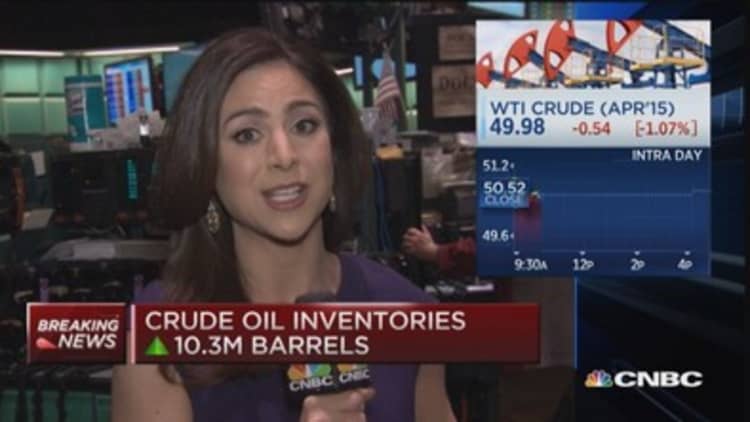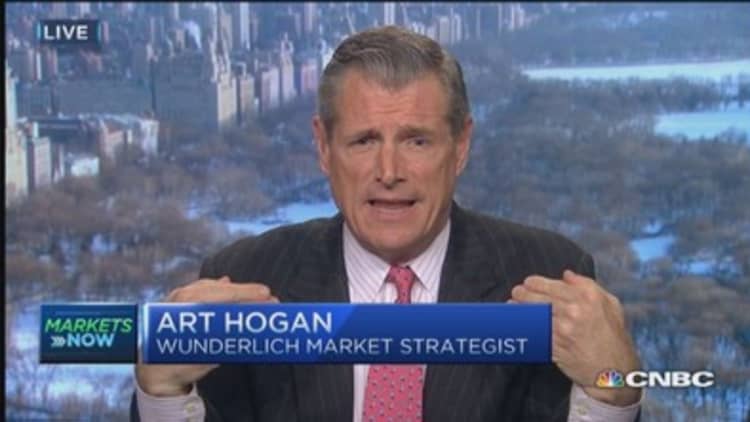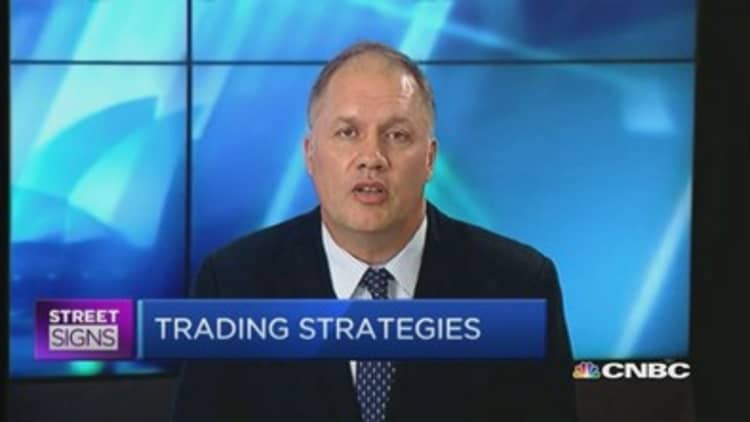
This is a breaking news story. Please check back.
U.S. crude futures extended gains on Wednesday after the Federal Reserve said the economy continued to expand across most regions and sectors from early January through mid-February, with auto sales and consumer spending rising in most Fed districts.
In its Beige Book report of anecdotal information on business activity collected from contacts across the nation, the central bank said oil and gas producers in certain districts anticipate cuts in capital expenditures this year, in a sign of low energy prices biting the industry.
U.S. crude futures closed up $1.01, at $51.53 a barrel, with their discount to Brent narrowing to less than $10 a barrel, after the announcement.
Meanwhile, April slipped 60 cents to $60.42 a barrel after climbing 2.5 percent on Tuesday.
Brent fell below $60 a barrel earlier in the session after a much larger-than-expected build in U.S. crude stocks, while Saudi Arabia's oil minister said he expected the market to balance itself and prices to recover.
The U.S. Energy Information Administration said U.S. crude stocks jumped by 10.3 million barrels last week, more than double the amount predicted by analysts and the eighth weekly rise in succession. U.S. crude inventories are at a record high.
Stocks at Cushing, Oklahoma, rose by 536,000 barrels, less than anticipated but still another increase at the U.S. crude contracts delivery point. Gasoline stocks were largely unchanged while distillates fell by 1.4 million barrels.
Read MoreGuess what country's energy sector is up 22%
Oil faced additional pressure from a stronger dollar as the U.S. currency rose to its highest since September 2003 against a basket of currencies, making commodities priced in dollars more expensive.
Earlier in the session, the market had received some support from Saudi Arabian Oil Minister Ali al-Naimi, who said he expected supply and demand would soon reach balance, and oil prices, which hit a near six-year low of $45 in January, would stabilize, adding to signs that OPEC's largest exporter sees consumption growing.
Read MoreSaudi Arabia expects oil price to stabilize
"I hope and expect supply and demand to balance and for prices to stabilize," Naimi said in a speech in Berlin. "Global economic growth seems more robust."



OPEC decided not to cut output last year and let prices fall as it moved to defend its share of the market against fast-growing U.S. shale output. Naimi said it was not Saudi Arabia's responsibility to "subsidize" higher-cost oil producers.
The speech followed news that Saudi Arabia had raised its official selling prices for oil deliveries to Asia and the United States on Tuesday.
"This is a sign that prices have bottomed out because it means Saudi is confident in raising prices without being afraid of losing market share," said Tony Nunan, a risk manager at Mitsubishi Corp in Tokyo.
Read MoreOil prices pose biggest political risk: Aon
Major powers' talks with Iran over its nuclear program were also in focus, as a deal could release more Iranian oil to the market after years of sanctions.
"There are still significant gaps and important choices that need to be made," U.S. Secretary of State John Kerry told reporters after more than 10 hours of talks in Switzerland with his Iranian counterpart, Mohammad Jawad Zarif.


